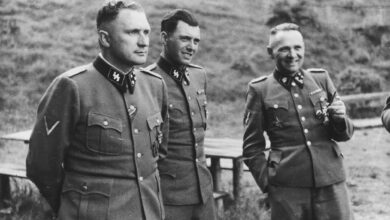Women’s Rights: A Historical Perspective
The modern age has seen the birth of dozens of unsubmissive women whose feminist struggle and sacrifices are beginning to bear significant fruit in our century.

The Woman Post | Daniel Vargas Bozzetto
Listen to this article
At the end of the XVIII century, in French Revolution, philosophers Olympe de Gouges and Mary Wollstonecraft sowed the seeds of women's freedom with their writings, the Declaration of the Rights of Woman and the Female Citizen and the Vindication of the Rights of Woman, respectively. Since then, women’s rights have not ceased to develop amid struggles, strikes, and historic deeds carried out by true heroines. Nowadays, thanks to those efforts, societies start to give birth to a new era of equality, although in some countries a cesarean section is needed. Let’s have a look at what the feminist fight has been about since the XIX century.
Seneca Falls
Many historians place the beginnings of the feminist movement in 1848. While Europe was trying to overthrow the neo-absolutist yoke and copies of the newly published Communist Manifesto were inflaming the first demonstrations of the labor movement, a group of American women and men were signing the Declaration of Sentiments, as a result of United States’ first women's rights convention, the one Seneca Falls witnessed on July of that year. Elizabeth Cady Stanton's name would go down in the history of gender equality as one of the principal authors of a document that spoke out against all the injustices women suffered and claimed their social, political, economic, and religious rights.
Just over a decade later, on 8 March 1857, thousands of women workers demonstrated in the streets of New York, denouncing deplorable working conditions and calling for better ones and provoking the male-dominated status quo to react with violence and disregard for the demands. The date would come to be celebrated as International Women's Day for the first time on the 8th March 1911 in Austria, Denmark, Germany, and Switzerland. A few days after, on 25th March, the sadly famous Triangle Shirtwaist factory fire, which killed around 130 women in that very year due to a total lack of security measures and good work conditions, urged to debate about women workers' rights.
Conquering the right to rule
Another key demand of the Declaration, women’s suffrage, would be realized for the first time in history in 1893, in New Zealand, a country whose path was soon followed by Australia in 1902, Finland in 1906, Norway in 1912, Germany in 1918, the United States in 1920 and many other countries during the XX century. Nevertheless, women's aspirations for democracy did not only concern the right to vote. The aim of occupying positions in government offices was embodied by Jeannette Rankin, the first congresswoman, elected to the United States House of Representatives in 1916. Soon after, in 1933, Frances Perkins became the first woman to hold a ministerial position in an American government, that of Franklin D. Roosevelt.
Women even got involved in the war to defend freedom and democracy. In Spain, Communist Party deputy Dolores “La Pasionaria” Ibarruri would deliver historic speeches to the republican forces to encourage them in the fight against fascist troops during the Spanish Civil War.
Also read: WOMEN'S SLAVERY STILL PERSISTS
In 1946 the United Nations Commission on the Status of Women was created and in 1948, exactly 100 years after Seneca Falls, Eleanor Roosevelt played a key role in drafting the Universal Declaration of Human Rights, contributing thus not only to highlighting women’s rights but to consolidating the post-war new world order. A few years later, in 1960, Sri Lankan Sirimavo Bandaranaike became the first of 61 women elected prime ministers to date, followed by Indira Gandhi, Golda Meir, and Margaret Thatcher.
Towards total equality
With the First World Conference on Women, held in 1975, the United Nations established a plan of action for the advancement of women that set minimum targets to be achieved regarding equality and eliminating discrimination. A tripartite theme based on equality, development, and peace was conceived and became the basis of the work of the UN in subsequent years. That same year, in Iceland, more than a tenth of the population went on strike to demand equal pay for men and women, a goal that would set a great part of the agenda for women's rights in the years to come, and that has not yet been achieved.
The major conferences held during the Decade for Women (in Copenhagen in 1980 and Nairobi in 1985) enabled women's organizations to participate in shaping the work of the United Nations and in 1995, in Beijing, the Fourth World Conference on Women was a breakthrough in gender equality and feminism. The then United States first lady Hillary Clinton addressed the audience to remember that “women’s rights are human rights.”
The 21st century would increase the breadth of the feminist struggle around the world, with a particular focus on countries where the status of women remains medieval and where women are subjected to systematic human rights violations. The same history of tireless struggle that feminism has been engaged in since its origins means that today, practices such as female genital mutilation and child marriage, for example, are fiercely opposed by a world public opinion that is increasingly aware of the need to eradicate these scourges. This trend is illustrated by the 2017 repeal of marry-your-rapist laws in Lebanon, Tunisia, and Jordan, for example. As UN Women Executive Director Phumzile Mlambo-Ngcuka points out, “we are the first generation with the possibility to fundamentally change power relations.”




